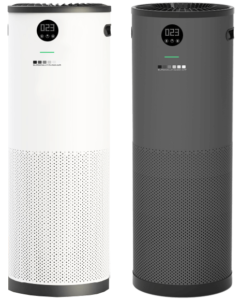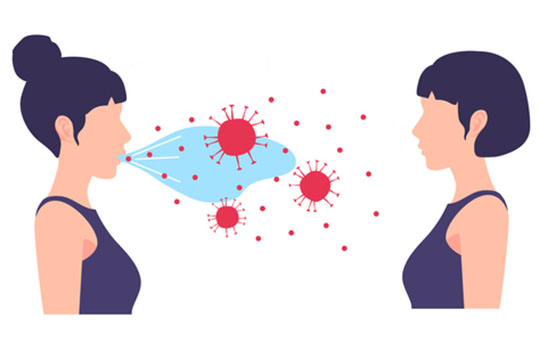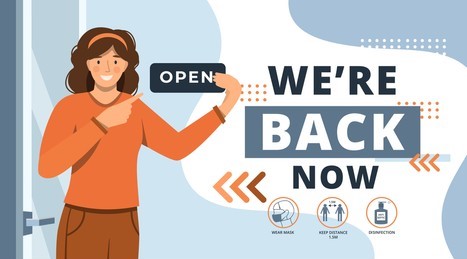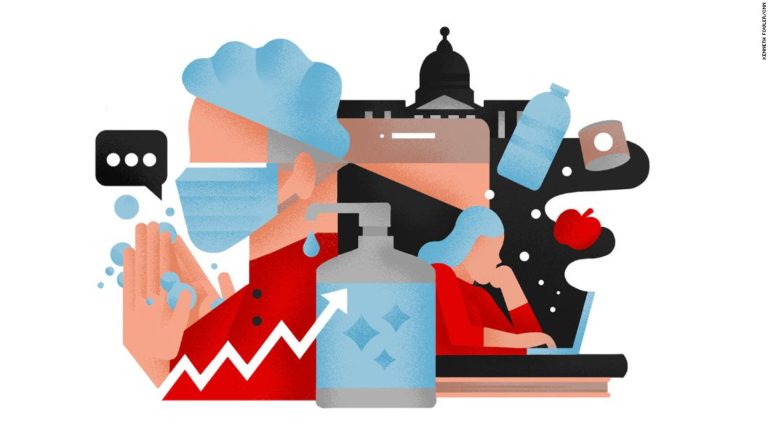The world is gradually reopening amid this COVID19 pandemic. Unfortunately, the novel coronavirus continues spreading and shows no sign of stopping, and yet winter is coming.
With more and more Canadians return to schools, workplaces, and public spaces, and start spending more time indoors as outdoor air temperatures drop, experts fear these indoor gatherings could spark new outbreaks. In this blog, we will be exploring the role medical purifiers play in protecting us from the coronavirus.
COVID19 can be spread by airborne transmission
Our understanding of how the coronavirus spreads is evolving. In the early days of the COVID19 pandemic, many experts assumed that the novel coronavirus is transmitted by direct or close contact with infected people who release small respiratory droplets wheen they cough, sneeze or talk. However, a growing body of research shows that airborn transmission of the virus through aerosols – microscopic respiratory droplets 5 μm or smaller in size – is possible. This means that SARS-CoV-2, the virus that causes COVID19, can flow in the air for hours after people cough, sneeze, talk, or sing.
In particularly, it can linger in poorly ventilated and enclosed indoor spaces, spreading farther than 6 feet from its source.Therefore, these public spaces are high risk. However, in many countries like Canada, many restaurants and bars are operating again, a number of schools have resumed in-person classes, and some people are back to the offices. How can we make these indoor spaces cleaner and safer to mitigate the spread of COVID19?
Ventilation really is just essential
Our understanding of how the coronavirus spreads is evolving. In the early days of the COVID19 pandemic, many experts assumed that the novel coronavirus is transmitted by direct or close contact with infected people who release small respiratory droplets when they cough, sneeze or talk. However, a growing body of research shows that airborne transmission of the virus through aerosols – microscopic respiratory droplets 5 μm or smaller in size – is possible. This means that SARS-CoV-2, the virus that causes COVID19, can flow in the air for hours after people cough, sneeze, talk, or sing.
In particular, it can linger in poorly ventilated and enclosed indoor spaces, spreading farther than 6 feet from its source. Therefore, these public spaces are at high risk. However, in many countries like Canada, many restaurants and bars are operating again, a number of schools have resumed in-person classes, and some people are back to the offices. How can we make these indoor spaces cleaner and safer to mitigate the spread of COVID19?
Air purifiers could be a must-have in a COVID19 winter
The virus that causes COVID19 loves dry air with low humidity. Airborne particles are smaller in dry air and low humidity. Infectious particles produced by a sneeze or cough remain in the air longer, increasing the risk of exposure to other people. According to a new study, every 1% decrease in relative humidity, COVID19 cases can increase by 7% – 8%. Therefore, in a COVID19 winter, purifying indoor air is essential to limit the potential spread of the virus.
So, how can you find the right air purifier? Look for a unit with a HEPA filter and a clean air delivery rate(CARD) of 300 cubic feet per minute or better.
Surgically Clean Air is among the most advanced and effective air purification systems on the market today. Clinical research study shows that its Jade model has excellent performance in hospitals, medical labs, and dental clinics to clean and sterilize the indoor air. Its multi-stage filtration system captures dust particles, pollen, volatile organic chemicals (VOCs), mold, allergens, viruses, odors, bio-aerosols, nitrious oxide, and many other pollutants that are found in the inside air in workspaces and residences.

Air purifier provides an added layer protection
Of course, air purifiers are not a magic bullet as they are not able to protect people from getting COVID19 alone. However, it is an added layer of protection, helping close the gap in infection control protocol which had previously focused mostly on hand washing and the disinfection of surfaces. When used alongside other precautions recommended such as wearing masks, social distancing, reduced occupancy, and proper sanitization, air purifiers can be a part of a plan to protect people indoors.
Just like air purifying, cleaning and sanitizing facilities with certified disinfectant solutions can be considered as another layer of protection. We recommend Vital Oxide, a hospital-grade disinfectant authorized by Health Canada for use against COVID19. For effective sanitization, foggers can be employed to apply the disinfectant as they allow for touchless application, even and efficient coverage, and less solution usage.




